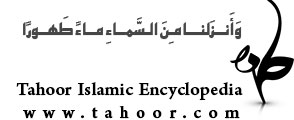
Eyne Nazakh -The rewriting of “Tamhid Al-Ghava-ed” book-
This book is a description of “Tamhid Al-Ghava-ed” book by “Ibn Mohammd Turkeh Isfehani” that also “itself” is a description of “Alghaved Al-Tawhid” book by “Mohammd Ibn Habib Al…Turkeh Isfehani. This book has three volum which its subject is about “mysticism”(erfan) and “Sufism”(tasavof). Between all Gnostic texts, the “Tamhid Al-Ghava-ed” of “Ibn Turkeh” has special position. Making theoretical and showing the Gnostic realities with intellect and proof, is the most obvious feature of this book that has rarely been found in other Gnostic texts. Ayatolla ####Javadi Amoli in this (book) and his Gnostic book, often emphasizes that mysticism, discusses about two sections: one is “what is the Tawhid(Oneness or Unity of God) and the other “who is monotheist”(believer in God’s Oneness or Unity). Also these two following subjects are the most difficult subjects of theoretical mysticism: 1- proofing the “individual unity” (vahdate shakhsi) and the multitudes justification(Tojihe kasarat). This old Gnostic work, for the first time has been printed by Alzahra publisher, in 1993 A.D. (1372).
Author’s brief biography:
Ayatollah Abdollah Javadi Amoli was born in Amol Township in 1933A.D. (1312). His father and ancestor were islam preachers and held the Household in high esteem. Ayatollah Javadi Amoli after finishing the elementary school, entered Amol’s theological school in 1946A.D. (1325) and until 1950 A.D. (1329) had studied there. After that, he went to Mashhad’s theological school but because its seminarians (theological students) did not show any reverence for Mashhad’s great scholars, he left there and entered Tehran’s theological school. After entering to Marvi’s school, studied “Rasa-el” and “Makaseb”, then learned “kefayatol usul”, “rational and transmitted sciences” (ulume aghli and naghli) and after 5 years he left for Qom’s theological school and has been there up to now. One of his cultural services is “the establishment of “Esra” publishers and research Institution in 1993A.D. (1372). He was present in constituent assembly(majlese khobregan) of constitutional law and in the first and second period of constituent assembly of leadership. He also has been one of the teachers community members of Qom’s theological school and now he is in charge of prayer leader on Fridays of sacred township of "Qom".
His masters and friends: Ayatollah Azizollah Tabaresi, Mirza Mahdi Mohi Aldin Elahi Ghomshei, Ayatollah Burujerdi, Imam Khomeni and Allameh Seyyed Mohammad Hossein Tabatabai, etc. He has many works such as: Tasnim, The commentary of Noble Quran, thematic commentary of Noble Quran, Rahighe Makhtom, Asrar Al-Salat, Sahbaye Hajj, Vilayat-e faqih, etc.
The structure of book:
The introduction of describer(shareh): The role and position of love(mavaddat)- The “Tamhid Al-Ghava-ed” and its official teachers- some subjects about “mysticism”(erfan).
The rewriting of “Tamhid Al-Ghava-ed”: An introduction about mysticism status and gnostic’s position.
Foreword: The role of prophets and the last prophet(p.b.u.h) in perception of Real Unity of God(Tawhide haghighi)- The features of “Tamhid Al-Ghava-ed”, etc.
The book’s introduction: The subjects of mysticism science- The preliminaries of mysticism science- The issues of mysticism- meanings and terms, etc.
“Gnostic Unity of God”(Tawhide erfani) and proofing the “individual unity of existence”(vahdate shakhsi wujud): method-pointings- “shared in meaning of being”(eshterake manaviye wujud)- “reality of being”(haghighate wujud) necessity, etc.
Monotheist and perfect man: necessity and complete epitome of perfect man- pointings- criticisms on theoretical preliminaries of complete epitome of man- criticisms on foundations of practical mysticism and reaching to “the most universal being”(koane jame)- answer to the criticisms.
Completing “the individual unity of existence”(vahdate shakhsi wujud) and referring the degrees from “being”(Bud) to “appearance”(Nemud): narrating and evaluating of “creatures unity proofs”(barahine vahdate mojud)- being free from involvement of mysticism about the subject of “shared in meaning(eshterake manavi) of “concept of being”(mafhume wujud)- criticism on subject of “theoretical Sufism”(erfane nazari)- The “proof of truthful”(borhane sedighin) in viewpoint of verses and traditions- obstecles of proofing the “individual unity of existence”(vahdate shakhsi wujud), etc.
Unity of “absoluteness of being”(etlaghe wujud) in quran and traditions: The importance of Unity of “absoluteness of being” (etlaghe wujud)- The Gnostic and heavenly language of quran- God, the real owner- sacred tradition(hadith ghodsi) of hidden treasure- The seventh Imam and the explanation of pure Tawhid(Oneness or Unity of God) in quran, etc.
The explanation of perfect monotheist: Tawhid(Oneness or Unity of God), union, unity and ascending degrees of monotheist- real life of perfect monotheist- The unique role of Tawhid(Oneness or Unity of God) in purification, etc.
Sources :
Eyne Nazakh -The rewriting of “Tamhid Al-Ghava-ed” book/ by Javadi Amoli